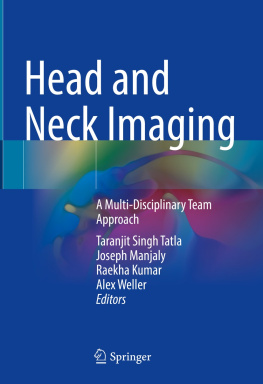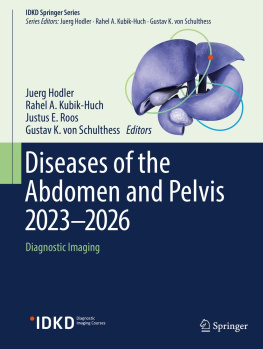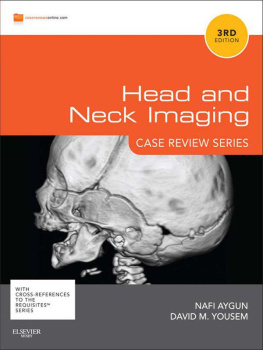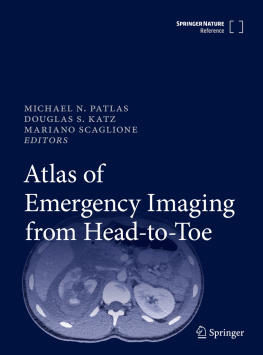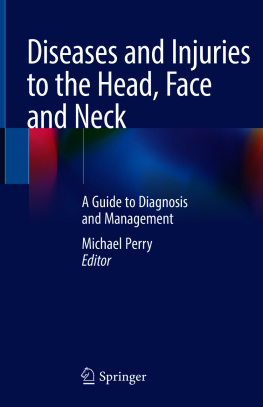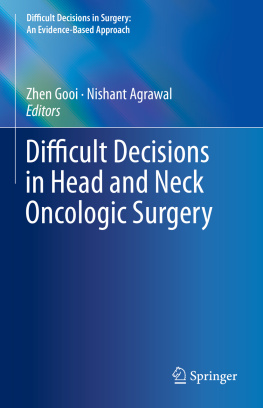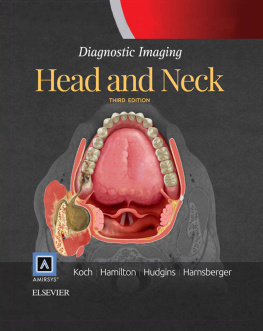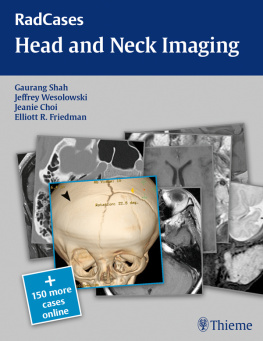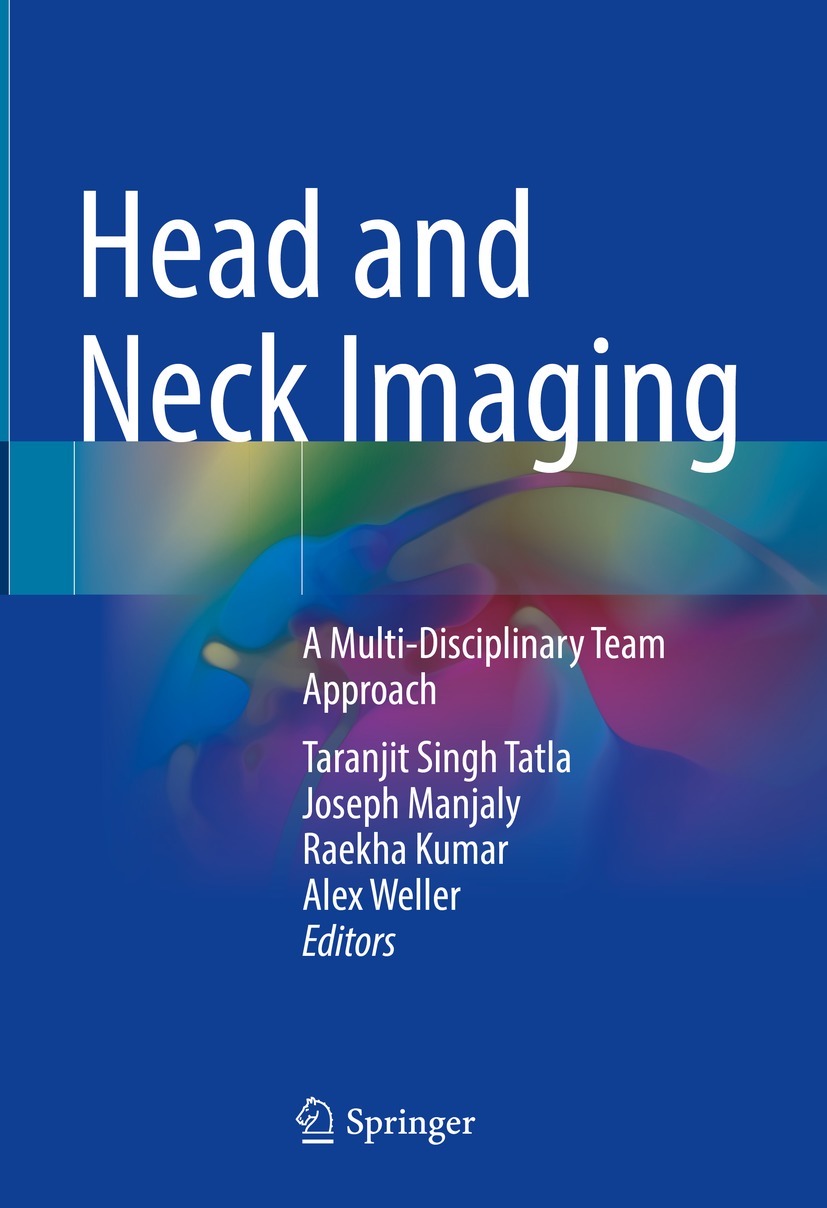Editors
Taranjit Singh Tatla , Joseph Manjaly , Raekha Kumar and Alex Weller
Head and Neck Imaging
A Multi-Disciplinary Team Approach
1st ed. 2021

Logo of the publisher
Editors
Taranjit Singh Tatla
ENT - Head and Neck Surgery, London North West University Healthcare NHS Trust, London, UK
Joseph Manjaly
ENT, Royal National ENT Hospital and University College London Hospitals, London, UK
Raekha Kumar
Radiology, West Hertfordshire Hospitals NHS Trust, Watford, Hertfordshire, UK
Alex Weller
Radiology, St Georges Hospital NHS Trust, London, UK
ISBN 978-3-030-80895-2 e-ISBN 978-3-030-80897-6
https://doi.org/10.1007/978-3-030-80897-6
Springer Nature Switzerland AG 2021
This work is subject to copyright. All rights are solely and exclusively licensed by the Publisher, whether the whole or part of the material is concerned, specifically the rights of translation, reprinting, reuse of illustrations, recitation, broadcasting, reproduction on microfilms or in any other physical way, and transmission or information storage and retrieval, electronic adaptation, computer software, or by similar or dissimilar methodology now known or hereafter developed.
The use of general descriptive names, registered names, trademarks, service marks, etc. in this publication does not imply, even in the absence of a specific statement, that such names are exempt from the relevant protective laws and regulations and therefore free for general use.
The publisher, the authors and the editors are safe to assume that the advice and information in this book are believed to be true and accurate at the date of publication. Neither the publisher nor the authors or the editors give a warranty, expressed or implied, with respect to the material contained herein or for any errors or omissions that may have been made. The publisher remains neutral with regard to jurisdictional claims in published maps and institutional affiliations.
This Springer imprint is published by the registered company Springer Nature Switzerland AG
The registered company address is: Gewerbestrasse 11, 6330 Cham, Switzerland
Foreword
It should be stated from the outset that Valerie and I from the very beginning of our training in ENT/Head and Neck grew up in an environment where multidisciplinary team working was already established at the Royal National Throat, Nose and Ear hospital, having commenced in the 1960s. The huge benefit and knowledge we obtained from the weekly 2-hour meeting at which all the important Head and Neck cases were presented by the senior radiologists, senior pathologists and senior surgeons was invaluable. Our combined surgical/radiotherapy clinic ran with all the paramedical staff, senior specialist nurses, prosthodontists and social workers. It was immensely beneficial to patients and staff alike. We are, therefore, entirely supportive of this type of multidisciplinary learning and are delighted to be asked to write this Foreword. It is fortunate that in the United Kingdom the management of most Head and Neck patients is nowadays discussed in a multidisciplinary team environment.
Whilst it has always been preferential to have as much understanding and exchange of knowledge between specialities as possible, it is a fact that traditionally most information has been gleaned from books and journals dedicated just to ones own discipline. The multidisciplinary approach has been adopted to improve communication and management of the patient and nowhere is this more important than in the complex area of the Head and Neck.
In this excellent book, each topic is discussed by both surgeons and radiologists, plus important additional specialities where appropriate, an approach which has obvious benefits and should be emulated in future books. Multidisciplinary working is not yet common in many countries and indeed it is to be hoped that this book will not only assist the learning of all trainees and consultants within the UK but help to expand the principles of multidisciplinary working to our international colleagues.
The substantial content and quality of the illustrations in the book make it an outstanding contribution on the subject and the inclusion of relevant case histories emphasises the key points in many of the chapters, so that the learning process is enjoyable, clear and memorable for readers in the many different disciplines that care for Head and Neck patients.
We personally commend the wide choice of topics and in particular, the inclusion of plain film radiology as there are still areas of the world where this is essential radiology in the absence of more advanced imaging techniques. We wholeheartedly recommend this book. It is well thought out, carefully compiled and is a distinct advance on many of its predecessors.
David Howard
Valerie Lund
Preface
Lets make a book that delivers radiology to the surgeon, and surgery to the radiologist
The year 2020 marks the 125th year since the accidental discovery of x-rays by Wilhelm Roentgen, a German mechanical engineer who found that electromagnetic radiation could be used to contrast tissue detail within the body. The first x-ray image created was that of his wifes hand, differentiating her metallic wedding ring from bony and soft tissue detail. Within the year, a radiology department was opened in Glasgow boasting pictures of a penny lodged in a young childs throat and kidney stones.
Since that time, many other significant developments and inventions in relation to radiological imaging have appeared: the advent of clinical ultrasound and nuclear medicine imaging in the 1950s, the introduction of the first commercially viable CT scanners in 1967, and modern whole-body magnetic resonance imaging in the late 1970s.
Modern hospitals and services are now designed and delivered, often at significant expense, with a plethora of radiological and endoscopic imaging platforms, all procured with the intent of diagnosing and treating diseases affecting a variety of organs and tissues in the body. These complement a whole host of other scientific investigations and measurements that inform on body organ integrity and physiological function. There are a variety of manufacturers for imaging equipment, ranging from small enterprises and novel imaging start-ups through to multinational medical technology powerhouses. Some may specialise and target specific markets and specialisms, even specific diseases or pathologies, whereas others may be generic and cross-cut specialty and organ distinctions.
The National Health Service in the UK, since its formation in 1948, has witnessed and evolved itself amidst all of the aforementioned technological advances. Designed as a public service to be free nationally at the point of delivery, based only on clinical need and not ability to pay, it has sought to remain financially viable in a world of increasing technological advance, innovation and healthcare cost. The requirement to make rational, evidence-based, cost-effective and clinically effective decision-making, with the available diagnostic armamentarium, has necessitated the development of national guideline forming bodies such as NICE (National Institute for Clinical Health and Care Excellence) that advise healthcare providers and commissioners for services, as well as healthcare professionals and the general public.

